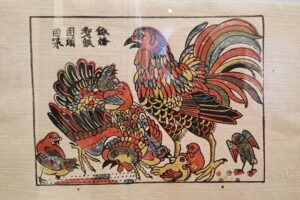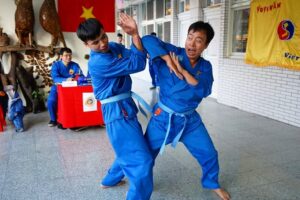Squatting can be found in Asian countries. So, when you travel to Vietnam, you will also encounter a lot of squatting images. Many people jokingly say that the Vietnamese are the most active yoga players in the world, practicing Asian squats well.
Asian squat is a way of sitting with knees bent, buttocks lower close to the ground, and feet and heels touching the ground.

Let’s learn the culture and basic and advanced practice for this squatting move.
How does the culture of squatting come?
The formation of the Asian squat stems from many characteristics of weather, habits, and body structure. Here are the basic features:
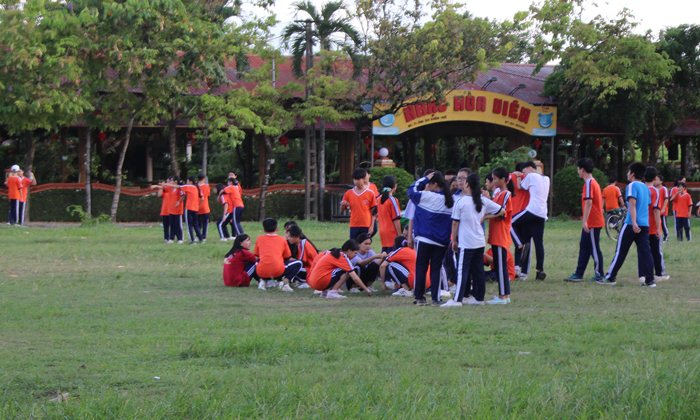
+ It is because the weather is hot and humid, with a lot of rain, making the ground and environment wet. And people squat everywhere to avoid getting wet in the wet season. In contrast, the summer is hot, squatting to feel cooler.
+ Asian squat originates from the agricultural culture. The field is wet and full of weeds, and the farmers cannot bring chairs to work in the farms and rice fields, so people just squat to rest.
+ The squatting comes with chatting culture and community. Many people can talk openly in a few minutes, and they sit down next to the street to exchange. They meet when they do not have an appointment or while going to work. Thus, they cannot equip chairs or go to a place with a proper seat, and it is convenient to squat to say a couple of sentences.
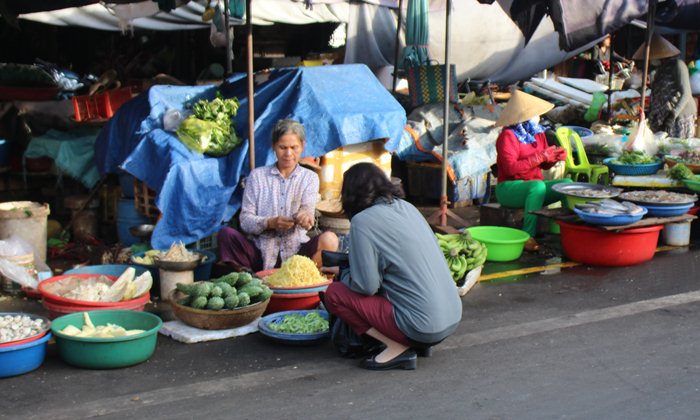
+ The Vietnamese market culture also contributes to the formation of squatting habits. The market itself is not equipped with seats for shoppers, and the market floor is usually of dirt in rural and brick floors in cities are not clean. When many people go to the market, they also want to talk together. The best way is just squatting.
+ Human biological characteristics also form the squatting ability. Many scientists also studied that Asian ankles could be flexible over 70 degrees. Thus, most Asian people can do the Asian squat easily. Almost all Europeans or Americans have only 30 degrees of flexible ankle joints, so they often have to stand on tiptoes when trying to sit down.
+ Working culture also creates a squat ability. Seeing the guy who repairs bikes on the street corner if he sits on a chair, the Vietnamese people think he definitely does not have a passenger and is lazy. Also, vendors selling food just sit on a chair when finishing or counting money, even though there is a small chair next to the basket. Squatting is easy for workers and suitable for thoughts.
+ The squat could be formed in war. Squatting is probably the skill of unstable lands because the sitting posture can change to standing fastest to run in the necessary cases. Also, Vietnam went through many fierce wars, which may be one of the factors creating the Asian squatting habit.
+ Children, typically in the countryside, often play on the ground for many traditional games in Vietnam. The style of Asian squatting is suitable and flexible for them to play and move around comfortably. So, most of the children in Vietnam can squat naturally.
Where and when to squat and not to squat?
Visitors to Vietnam will easily see squatting in many places, most still in rural areas.
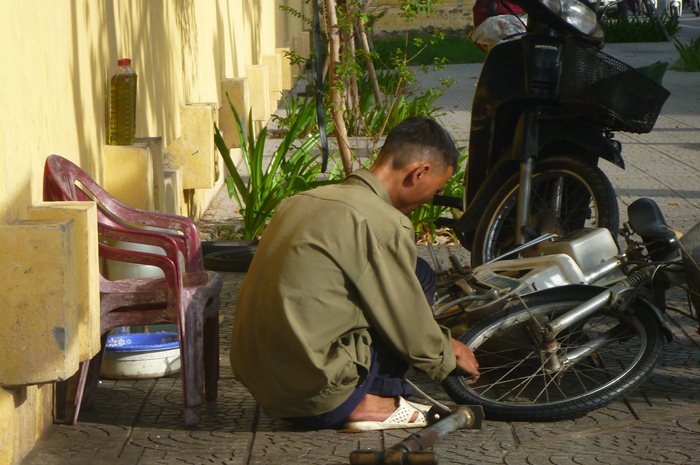
- On the rice fields in Vietnam, plenty of farmers rest after working by squatting to avoid wetness.
- Squatting is not just a resting act. You can see many people do jobs that force workers to squat: Sifting rice, wrapping cakes, cleaning Vietnamese vegetables, taking care of crops in the countryside, bicycle repair, street-seller vendors in the cities, mostly squatting.
- Using the toilet, many places – especially in small towns and rural areas, still use squatting pedestals. Ground-like European pedestals have only appeared recently.
- Play on the streets. Many children still have to squat to hit balls and play slots because the sitting posture is very mobile.
However, due to the social characteristics and the development of cognitive life, the Asian squat is gradually hard to find.
People should also avoid squatting in the following cases to express the civilization in Vietnamese culture.
In the eyes of the Europeans, Asian squatting is still a characteristic of culture, but people are slowly saying goodbye to squatting.
- Squatting is not suitable in crowded public places. Also, squatting for a long time is not good for digestion, so there are fewer and fewer people squatting for eating.
- Do not squat when welcoming important guests. At that time, it would be rude to squat and talk.
- When talking with strangers, the speakers should stand or sit in a chair to show respect.
- When visiting luxury places, hotels, restaurants, and supermarkets in Vietnam, Asian squat is not suitable.
- Squatting is forbidden when women wear Vietnamese traditional dresses.
Benefits and harms when squatting
Asian squatting is the familiar sitting posture of many people. Squatting also causes controversy on both sides, getting health benefits and being harmful to bones and joints.
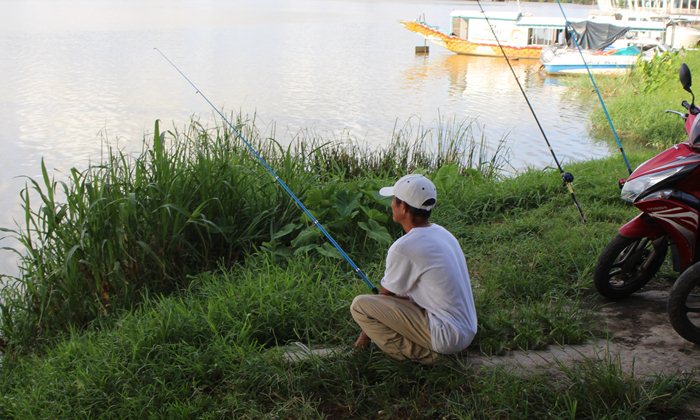
Benefits of squatting
As the results of the study, squatting will control the excess fat in the abdomen and not develop to improve body size.
Asian squat also helps the process of blood circulation to the heart better and faster when the glutes, abdomen, and thighs are squeezed.
Squatting contributes to easy secretion, supports the body to detox effectively, and is beneficial for the digestive system (but not squatting for a long time).
Some recent findings: an Asian squat can strengthen the body, reduce the risk of high blood pressure, and reduce cholesterol.
When squatting, the muscles of the body contract a lot, equivalent to 40% of the activity of muscle contraction when walking, which supports maintaining a healthy body for the squatting person.
The harm of squatting
Some people believe that squatting affects the knee and kneecap because most body weight is put into these joints.
If the squatting takes too long, the people will have numb legs. When standing up, they will be dizzy. Also, some people experience back pain from long Asian squats.
For pregnant women, some opinions say that they should not be squatting for long because it can cause abdominal pain and stomach cramps.
When squatting, the body force exerted on the knee, muscles, and femur increases 7-8 times. Meanwhile, walking is only half of your body weight, and when climbing stairs, the load on the knee increases by 3 -4 compared to the force when standing.
How to do squat at home
If squatting accurately and not for too long, it will bring positive benefits for people who often practice the Asian squat. As a result, a lot of yoga athletes practice the squatting movement.
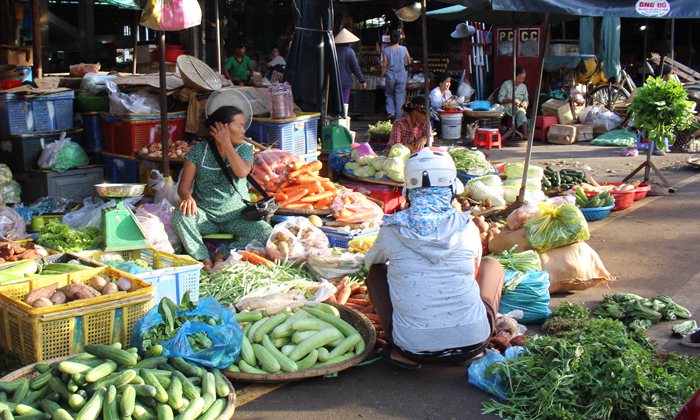
We, who are very familiar with this pose – as we are Vietnamese, will show you how to do a squat correctly with beginning and professional exercises. However, these lessons are also guides for reference. If you have back, bone, or other health problems, you should consult your doctor before exercising.
Asian squat exercise for beginners:
Time needed: 5 minutes
If you are a beginner in practicing an Asian squat, you need to start doing it carefully and slowly with the guides below.
- Prepare to practice the Asian squat: Choose a location that has a good grip (like a window) at your waist height or a little lower.
- Get a suitable standing position: You are standing beside or opposite the handle. One or two hands hold the handle. (Hold one hand while standing on the side).
- Extend your feet: Extend your feet shoulder-width apart, not larger than your shoulder.
- Squat down: Slowly sit down while the hand always keeps the handle with the purpose of helping to reduce the pressure put on your legs so that you can easily sit down. Do not sit down quickly!
- Keeping the position for 10 -15 seconds: When you have your knees fully bent, you continue keeping this position for 10 -15 seconds. Please note your buttocks near the ground (not touching the surface), and keep your heels still touching the surface.
- Stand up: You will stand up slowly. It’s a bit difficult for beginners. Use the force of your hand to pull to support your body. Meanwhile, you use the strength of the knee and thigh muscles to help your body stand up.
- Start at 3 times: Practice at 3 times, then gradually increase the number of times of squatting per day. When familiar with sitting down and standing up, you gradually get rid of the handle. If you can squat and get up comfortably without a handle, you are successful in Asian squatting.
Advanced Asian squat exercise:
Advanced skills to practice squats are more difficult because you do nearly the Asian half squat.
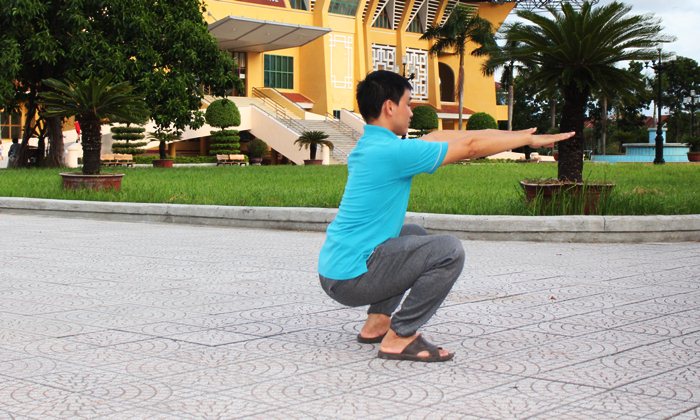
- Choose an open-airy-flat position to start the Asian squat exercise to increase thighs, buttocks, and knee strength. Many women love to practice this one.
- Keep feet shoulder-width apart.
- Hands move forward, parallel to the ground, and eyes straight.
- Slowly sit down and your hands still parallel to the ground. When you lower your body, you try to keep your back as straight as possible.
- You don’t fully bend the knee, but keep it slightly open. The distance from the heel to the buttocks is 15 – 20 cm.
- Hold this position for 20 -30 seconds.
- Slowly stand up. Keep your arms still, and try to keep your back straight.
- Do this 10 to 15 a day, and you will see many effects.
Now is your turn! Practice the Asia squat properly for good results. Good luck!
Do you like the way of Asian squatting?
If the post is helpful, please encourage us by sharing it with your friends! Thanks!


